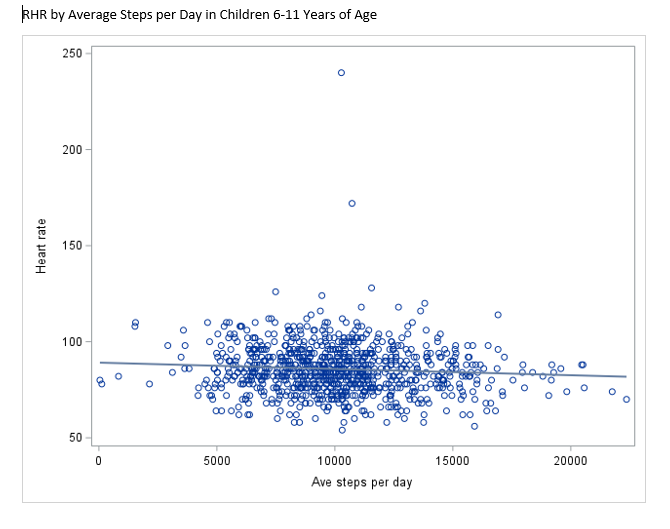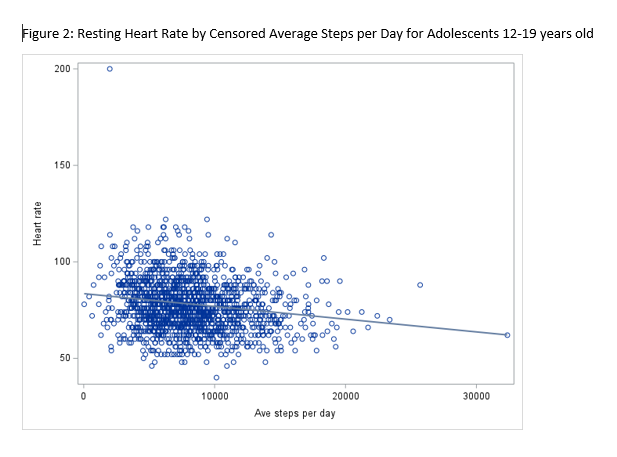General Pediatrics: Primary Care/Prevention
General Pediatrics 1
115 - Resting Heart Rate as Clinical Indicator of Physical Fitness in Children and Adolescents
Publication Number: 115.114

Susan D. Gasparino, MD (she/her/hers)
Fellow
Golisano Children's Hospital at The University of Rochester Medical Center
Rochester, New York, United States
Presenting Author(s)
Background:
Cardiorespiratory fitness (CRF) and physical activity (PA) are modifiable factors that aid in preventing cardiovascular disease. Measuring these factors has historically relied upon invasive/costly technology or patient self-report. In adults, average daily step-count (ADSC) is recognized as a prognostic marker for cardiovascular outcomes and lower Resting Heart Rate (RHR) has been correlated with higher fitness. RHR can now be passively recorded by devices such as Fitbitsâ but the correlation between RHR and CRF in children has not been well-established.
Objective:
To examine the association between RHR and ADSC in children (6-11 y/o) and youths (12-19 y/o) using accelerometer data from the 2005-2006 National Health and Nutrition Examination Survey (NHANES).
Design/Methods:
NHANES is designed to assess the health of U.S. adults and children using a nationally representative sample of about 5,000 people each year. The 2005-2006 NHANES is the most recent one to include directly measured step-based accelerometer metrics. Step count data were based on the censored criteria described in Tudor-Locke et al (excluding steps taken below 500 activity counts/minute). The relationship between ADSC and RHR was examined with linear regression models. Statistical analyses were performed using SAS v9.4 which accounted for the complex NHANES sample design. Sample weights were used to allow the results to be generalizable.
Results:
RHR and ADSC followed a normal distribution for both the 899 children and the 1640 youths in this study. RHR by avg. steps/day were modeled using censored (figs. 1,2) and raw step count data. In children, RHR decreased by an avg. 0.3 beats per minute (bpm) for each additional 1,000 steps/day: p=0.02. When using raw step count, the association was not statistically significant: p=0.06. In youths, RHR decreased by an avg. 0.7 bpm for each additional 1,000 steps/day: p< 0.001. With raw steps, the association was also statistically significant: p< 0.001. The mean RHR for children with ADSC >10,000 (n=447) was 85.3 compared to 86.3 for children with ADSC < 10,000 (n=452), p=0.29. For youths, the mean RHR for those with ADSC >10,000 (n=414) was 74.9 compared to 79.3 for those with ADSC < 10,000 (n=1226), p< 0.001. Overall, these data from NHANES reveal a statistically significant decrease in RHR with increased PA, supporting the hypothesis that this relationship exists in children as well as in adults. The decrease in RHR per 1,000 steps is double in youths as compared with children, suggesting that efforts to use RHR as a marker for CRF would likely be more successful in adolescents.
Conclusion(s): 

